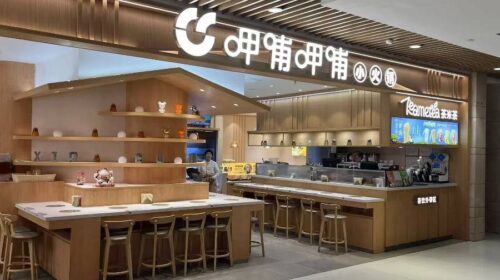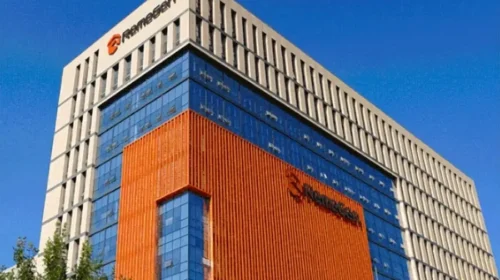Haidilao tastes profit success with budget hotpot chain

The Chinese restaurant sector is continuing a run of upbeat results and earnings forecasts, with hotpot giant Haidilao saying its profits surged last year
Key Takeaways:
- Haidilao predicted its net profit for 2023 would reach at least 4.4 billion yuan, a rise of nearly 170%
- The hotpot leader has rolled out cheaper options to tempt budget-conscious consumers in China’s weakening economy
By A. Au
As China’s dining-out industry rebounds from the depths of the pandemic, the hotpot chain Haidilao International Holdings Ltd. (6862.HK) has come to the table with a forecast of surging annual profits.
The earnings for last year, once finalized, will add to a banquet of appetizing results from popular restaurant brands that have made it through the Covid crisis.
Earlier this month, the operator of China’s Pizza Hut and KFCoutlets, Yum China (YUM.US; 9987.HK), posted an 87% year-on-year jump in annual profits to $827 million. Chains selling Chinese cuisine are also whetting appetites with talk of strong earnings recoveries last year, when they were released from Covid restrictions. Jiumaojiu (9922.HK), famous for its pickled fish, has predicted net profit growth for the period of at least 813%. Shenzhen-listed Quanjude Roast Duck (002186.SZ) has forecast a palatable profit of between 56 million yuan ($7.8 million) and 66 million yuan in 2023, coming back from a 278 million yuan loss the previous year.
And Haidilao, known for its spicy hotpots and quirky customer service, has joined in with a positive earnings alert, predicting its profits jumped to at least 4.4 billion yuan last year, which would be a gain of 168%.
Many restaurants have welcomed back a hungry clientele after China dropped its zero-Covid policies early last year. Haidilao said higher table turnover rates and increased efficiency would boost its 2023 revenue to at least 41.4 billion yuan, a rise of 33.3% from the preceding year.
Notably, the performance would beat Haidilao’s earnings in 2019, the last full year before the pandemic. Revenue would be at least 65.9% higher than 2019 while profits would beat the pre-pandemic year by no less than 71.8%, Haidilao said, citing the company’s revived expansion strategy.
Founder and Chairman Zhang Yong has steered the company through the lean years back onto a growth path, with bumps along the way.
When Covid spread in 2020, Zhang bet that the health crisis would soon pass and he embarked on an ambitious expansion drive, adding as many as 544 dining outlets in a year to take the global store count to 1,298. The chain kept growing in the first half of 2021, opening nearly 300 more stores. But Covid persisted and the company’s finances quickly deteriorated.
By the middle of that year, reality finally caught up with Zhang, who admitted that his plan had been driven by “blind confidence”. In June 2021, Haidilao launched a wave of store closures, shuttering 260 restaurants that year alone and laying off staff to cut costs.
In the second half of 2022, when the pandemic began to ease, the strategy shifted back towards expansion, though at a modest rate. That year the company opened 24 new outlets and reopened 48 restaurants, moving from a loss of 4.16 billion yuan in 2021 to a profit of 1.37 billion yuan.
The company did not rush to expand when it was freed from Covid restrictions. The chain’s Chinese dining outlets numbered 1,382 by the end of June last year, only 11 more than at the close of 2022. Zhang chose instead to accelerate internal reforms, dividing the business into regions and giving managers the power to change the product mix to meet local needs, guided by 19 regional coaches.
Haidilao made an early name for itself by offering a variety of extra services to customers as they waited to be seated. More services were added in 2023 to attract customers, including sending buses to pick up the prospective diners. Many branches also came up with novel dishes to tempt the palate. The menus featured hot pot soup bases with sour cabbage and pork in Beijing and hot pepper in Henan, while Suzhou diners could tuck into fried rice with crayfish.
China’s catering industry achieved a robust recovery last year, as revenues grew 20.4% to a record 5.3 trillion yuan, according to data from China’s National Bureau of Statistics. But the restaurant trade is also one of the country’s most competitive sectors, with multiple brands battling to grab and retain diners. Haidilao has had to roll out an eye-popping array of extras to get a market edge, from manicures to shoe polishing services and staff who serenade diners on their birthdays. Last year a group of Haidilao workers were an online sensation with a restaurant dance routine.
Price vs footfall trade-off
However, the company could not escape the bite of a broader economic slowdown as consumers scale back their spending, pushing dining brands into a price-cutting scramble. Haidilao has responded with a self-service, no-frills offshoot that provides hotpot meals on a tighter budget. The spending per head at its cheaper “Hilao” chain is just 79 yuan, 20% less than at the standard outlets.
Hailao provides a stripped-back eating experience without any singing or dancing. The dishes themselves come in a lower price bracket, with spicy soup bases at just 19.8 yuan or 29.8 yuan. A plate of beef costs 28 yuan to 49 yuan, less than half the price at the regular Haidilao branches.
After the rethink, Haidilao’s customer traffic surged during China’s holiday periods last year. As of the end of June, its table turnover had risen 0.4 times to 3.3 times a day, although the rate was still below the peak of 5.2 times. The average unit price in the first half also fell to 102.9 yuan, about 2% less than in the same period of 2022, with discounts and promotions likely to have pushed the price further down in the second half.
Haidilao’s stock rose about 4% in the three trading days after the earnings prediction. The resulting forward price-to-earnings (P/E) ratio of 16.7 times is slightly higher than Jiumaojiu’s 15.7 times but lags the 17.8 times for Xiabuxiabu (0520.HK), another hotpot chain.
Analysts are generally upbeat about Haidilao’s prospects for continued recovery. CCB International noted stable sales during the Lunar New Year holiday and a 35% year-on-year rise in customer numbers. The investment services firm assigned the stock an “outperform” rating with a target price of HK$19.7, saying the chain will continue to benefit from many favorable factors this year. CITIC Securities set a target price of HK$19 with an “overweight” rating, saying Haidilao’s store growth was outpacing the industry this year.
To subscribe to Bamboo Works free weekly newsletter, click here






